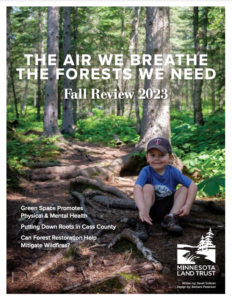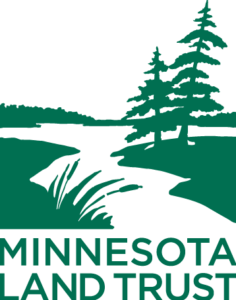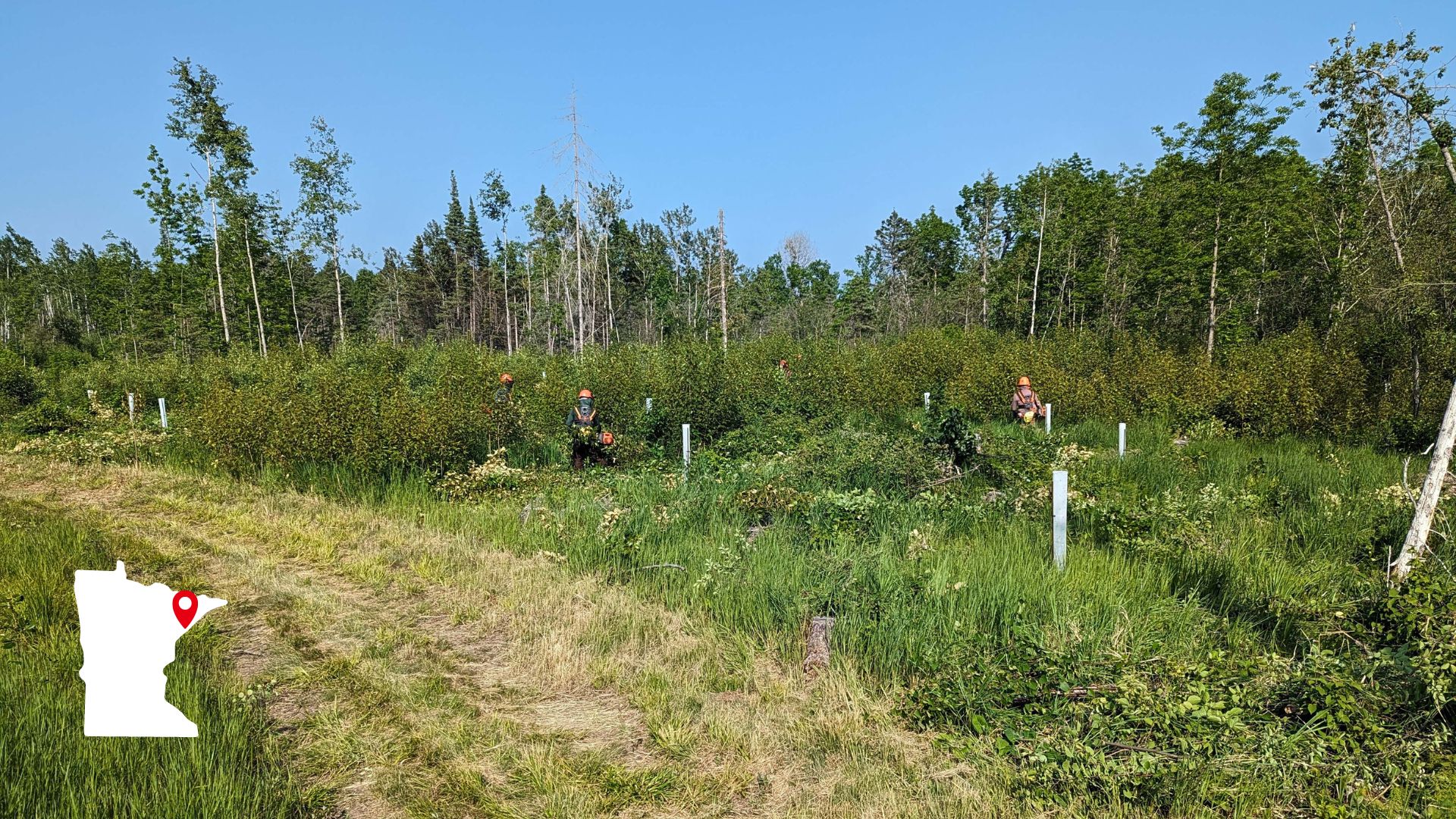
The buzz of chainsaws is punctuated by a crack of wood. Though it may seem counterintuitive, even jarring, this is the sound of forest restoration—specifically, restoration of 115 acres in Lake County, Minnesota.
The owners of the property, situated directly between Split Rock Lighthouse and Gooseberry Falls State Parks, acquired a conservation easement in 2019, permanently protecting 950 acres dominated by forest and wetlands. Prior to the Land Trust’s involvement, they had been actively restoring the landscape, adding 2,000 new trees over the course of several years.
According to Haley Golz, Minnesota Land Trust Restoration Program Manager, “The increasing prevalence and scale of climate change-related wildfires puts forest restoration front and center, especially in the Arrowhead region where there are large sections of previously harvested forest that are often at a higher risk for fueling fires.”
Haley has been working with the landowners to address their concerns about low species diversity and a large number of dead and dying balsams due to a budworm infestation on their property. “After a disturbance, like clearcutting, infestation, or fire, aspens are one of the first trees to establish, followed closely by balsams.
Without effective management, dense, low diversity forests comprised entirely of these early establishing trees can become an incredible fuel source for fire.”
Forest Restoration Cycle
This forest restoration project cycles through three phases: cutting forest gaps to allow enough sunlight to support new trees; removing brush around recently planted trees to support them as they try to establish; and planting long-lived trees like white pine, white cedar, and red pine.
These trees’ lifespans are 200 to 800 years, and the pines’ thick, protective bark makes them naturally resistant to moderately intense fires.
Helping establish old-growth forests is part of the Minnesota Land Trust’s climate-forward restoration agenda.
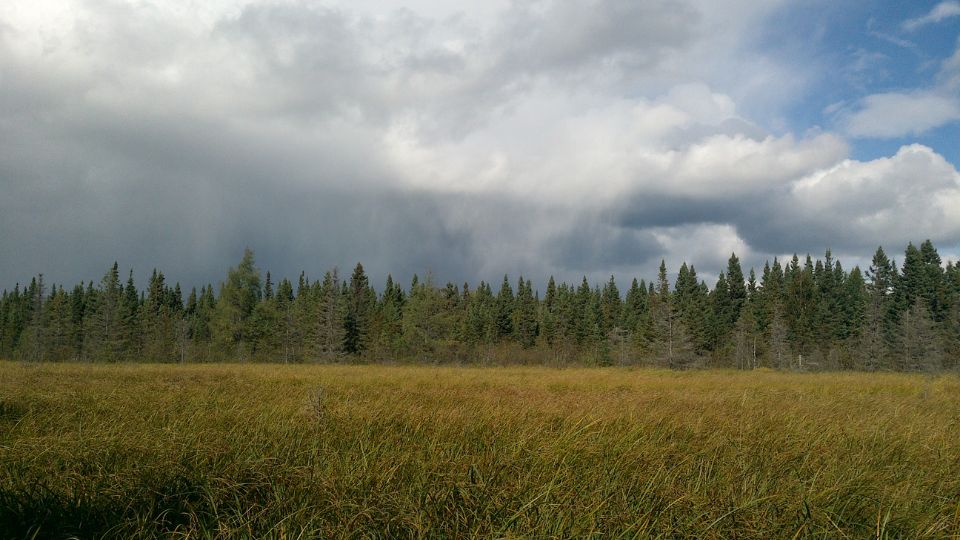
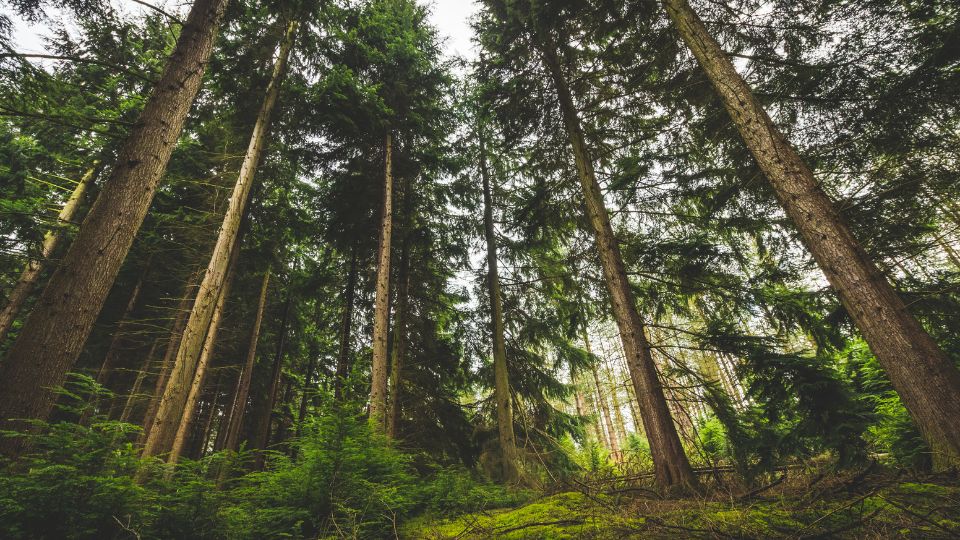
According to the US Forest Service, 15–40% of Minnesota’s forested acres contained old growth trees prior to European settlement. Today, it’s only about 2%.
“Forests have the potential to offset around one-third of global emissions—as a natural climate solution they’re pretty unrivaled,” said Haley. “This permanently protected forest will benefit generations to come by helping reduce the spread of fire, preserve air quality, and sequester more carbon over the lifetime of the trees.” Learn more about the Land Trust’s habitat restoration work across Minnesota.
Article Contributors
Written by: Sarah Sullivan—Communications & Marketing Manager
Professional review by: Haley Golz—Restoration Program Manager
As Seen in the 2023 Fall Review
This restoration project was featured in the Minnesota Land Trust’s 2023 Fall Review print newsletter, highlighting the importance of preserving clean air and forests.
Thank you for your continued support of habitat conservation, restoration, and nature engagement in Minnesota.
More Private Lands Restoration Projects
- Restoration Improves Forest Health, Mitigates Wildfire Risk in Northern Minnesota
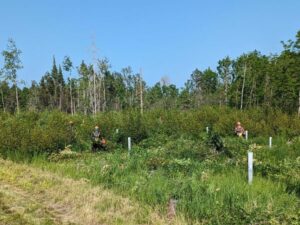 The buzz of chainsaws is punctuated by a crack of wood. Though it may seem counterintuitive, even jarring, this is the sound of forest restoration—specifically, restoration of 115 acres in Lake County, Minnesota. The owners of the property, situated directly between Split Rock Lighthouse and Gooseberry Falls State Parks, acquired a conservation easement in 2019,… Read more: Restoration Improves Forest Health, Mitigates Wildfire Risk in Northern Minnesota
The buzz of chainsaws is punctuated by a crack of wood. Though it may seem counterintuitive, even jarring, this is the sound of forest restoration—specifically, restoration of 115 acres in Lake County, Minnesota. The owners of the property, situated directly between Split Rock Lighthouse and Gooseberry Falls State Parks, acquired a conservation easement in 2019,… Read more: Restoration Improves Forest Health, Mitigates Wildfire Risk in Northern Minnesota - A Century Old Farm’s Greatest Yield Yet
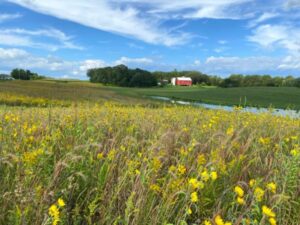 The property in the Minnesota Land Trust’s Rum and St. Croix River Conservation Priority area includes the forested northern shore of Rock Lake and is situated between a Walmart Supercenter, golf course, and two residential developments near the growing community of Pine City, Minnesota. The most obvious and, likely lucrative, opportunity for retired farmer… Read more: A Century Old Farm’s Greatest Yield Yet
The property in the Minnesota Land Trust’s Rum and St. Croix River Conservation Priority area includes the forested northern shore of Rock Lake and is situated between a Walmart Supercenter, golf course, and two residential developments near the growing community of Pine City, Minnesota. The most obvious and, likely lucrative, opportunity for retired farmer… Read more: A Century Old Farm’s Greatest Yield Yet - Goats Help Restore Resilient Lands in Southeast Minnesota
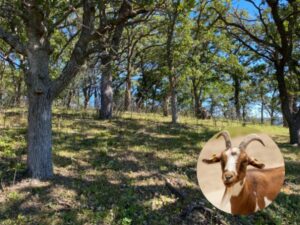 Goats are known for all kinds of antics, including yelling, fainting, and of course, climbing into everything from delivery trucks to trees. In Southeastern Minnesota, on a Winona County property permanently protected by a Minnesota Land conservation easement, these functionally majestic animals are being leveraged for another one of their innate talents-their ability to destroy… Read more: Goats Help Restore Resilient Lands in Southeast Minnesota
Goats are known for all kinds of antics, including yelling, fainting, and of course, climbing into everything from delivery trucks to trees. In Southeastern Minnesota, on a Winona County property permanently protected by a Minnesota Land conservation easement, these functionally majestic animals are being leveraged for another one of their innate talents-their ability to destroy… Read more: Goats Help Restore Resilient Lands in Southeast Minnesota

This permanent conservation easement was made possible thanks to the members of the Minnesota Land Trust and Hennepin County with funding from the Outdoor Heritage Fund, as appropriated by the Minnesota State Legislature and recommended by the Lessard-Sams Outdoor Heritage Council (LSOHC).

